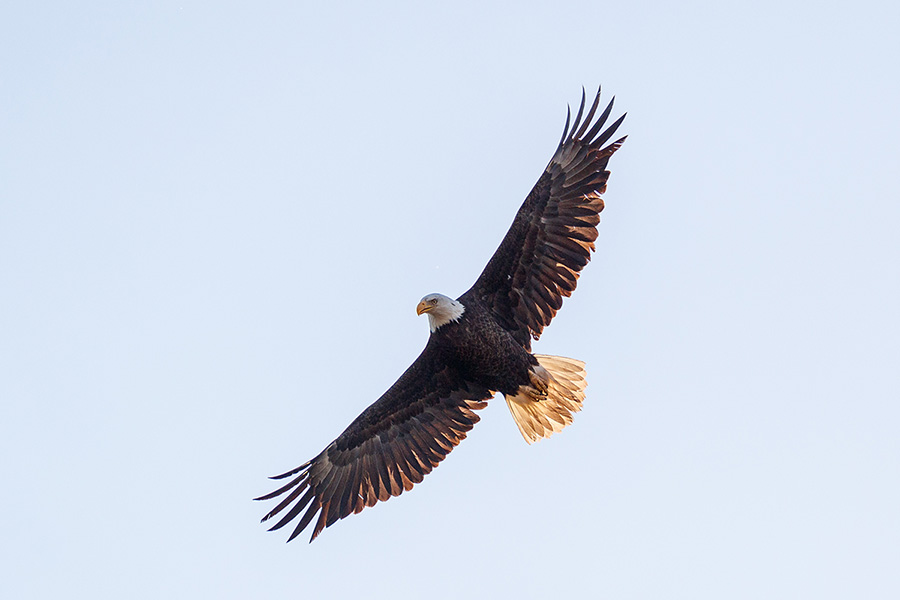The Northern Arizona Audubon Society hosted a Birding 101 course at the Camp Verde Community Library on Friday, March 31.
The course, presented by Rich Armstrong, covered the basics of birding for beginners and included a virtual tour of different bird species in the Verde Valley. Armstrong, who has been birding for around 30 years, leads many of the society’s field trips.
Armstrong aimed his presentation at answering the question “Why bird?” He made the case that birding is fun, a form of exercise, a great retirement hobby, a great way to see nature and can be easy or challenging, casual or serious.
Armstrong also compared birding to his time in the military: Hours and hours of boredom followed by three seconds of chaos.
Almost 400 bird species can be seen in Yavapai County, with about 100 of those being very rare, giving an average of 250 spottable bird species. Armstrong pointed out that April happens to be the number one birding month in the valley.
Birding equipment starts with binoculars and a field guide, although most people use birding apps rather than physical guides nowadays. Available apps include Sibley and Merlin, the latter of which was developed by Cornell University, and these can identify birds using their songs. Binoculars range in price from $50 to $2,500; for those who get serious about birding, a spotting scope is another useful tool. Armstrong revealed that he never goes to the mailbox, or anywhere for that matter, without his binoculars.
Armstrong joked that birds like free stuff. Those interested in attracting birds can easily set up their yards with various types of feeders including:
- Seed feeders to attract cardinals, jays and finches
- Thistle feeders for goldfinches
- Suet feeders for woodpeckers, wrens and warblers
- Millet feeders for juncos, blackbirds and doves
- Sugar feeders for hummingbirds
- Ground feeders for quail
- Water for all birds
Squirrel baffles can be used on feeders to keep out pesky squirrels. Armstrong described how he once used a dollar store slinky to deter them, commenting that his backyard looks like a goodwill store.
If birding in your backyard, keep a yard list. This includes any bird you can identify while you are in your yard. The NAAS gives out a “yardie” certificate for members who identify 25 yard bird species and a plaque for 50 birds.
Armstrong encouraged beginner birders to keep lists. He maintains a life list of all of the birds he has seen in his life, as well as an Arizona list, a Yavapai County list, a Verde Valley list and a yard list. He keeps special lists as well, such as the list for the Sedona Wetlands. Armstrong suggested using the app Ebird, which can keep multiple birding lists all in one place.
There are many places to bird in the Verde Valley. In Armstrong’s view, the three best birding spots in the valley — meaning they have the greatest number of species — are the Sedona Wetlands, the bubbling ponds and Dead Horse Ranch State Park. These average around 260 different bird species apiece. Aside from such water habitats and riparian areas as the Verde River and Clear Creek, the grasslands off Cornville Road, mountains such as Mingus and canyons such as Oak Creek Canyon are also habitats rich in bird diversity.
“Do not underestimate the desert,” Armstrong said, observing that it can be a good place to find birds. Birders often experience “warbler neck,” involving an upward tilt of the head, but an advantage of birding in the desert is that birds can be spotted at eye level.
To identify a bird properly, Armstrong recommended that birders “look at the bird completely until you are bored to tears with that bird.” A bird in flight looks different than a sitting bird, so posture can offer additional clues for identification.
Armstrong shared images of bird species that can be seen at different places in the Verde Valley at different times of the year. Certain species also change their appearance at different times of the year, often having brighter plumage during the breeding season.
Many itinerant birds will be arriving in the valley soon, including the lazuli bunting and yellow warbler. Armstrong stated that the best birding spot in the Camp Verde area is the Clear Creek campground, where he once spotted a western screech owl.
The lecture included a bird watching walk the following day. The NAAS hosts monthly meetings at the Sedona Public Library and has many field trips, all of which are free.
